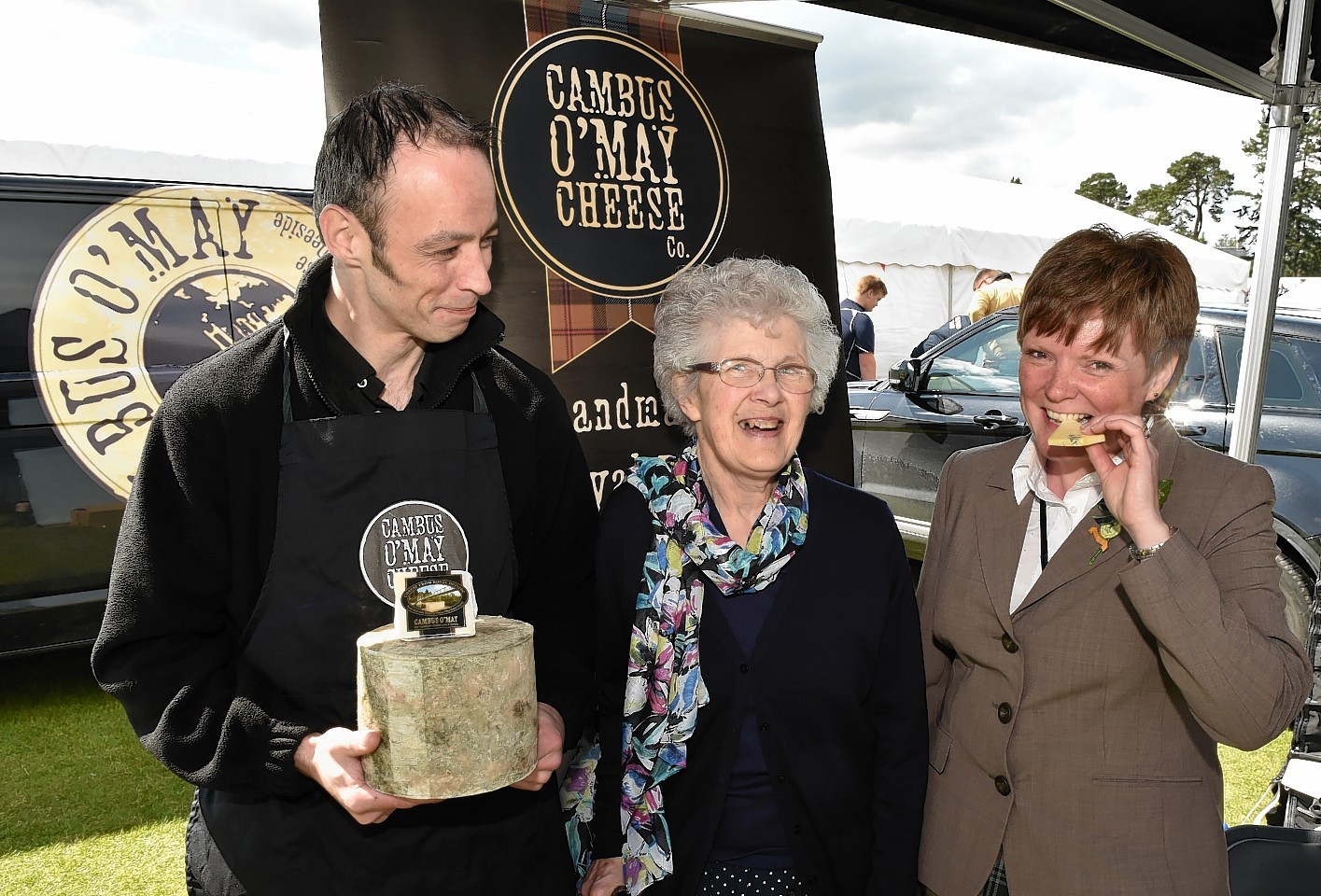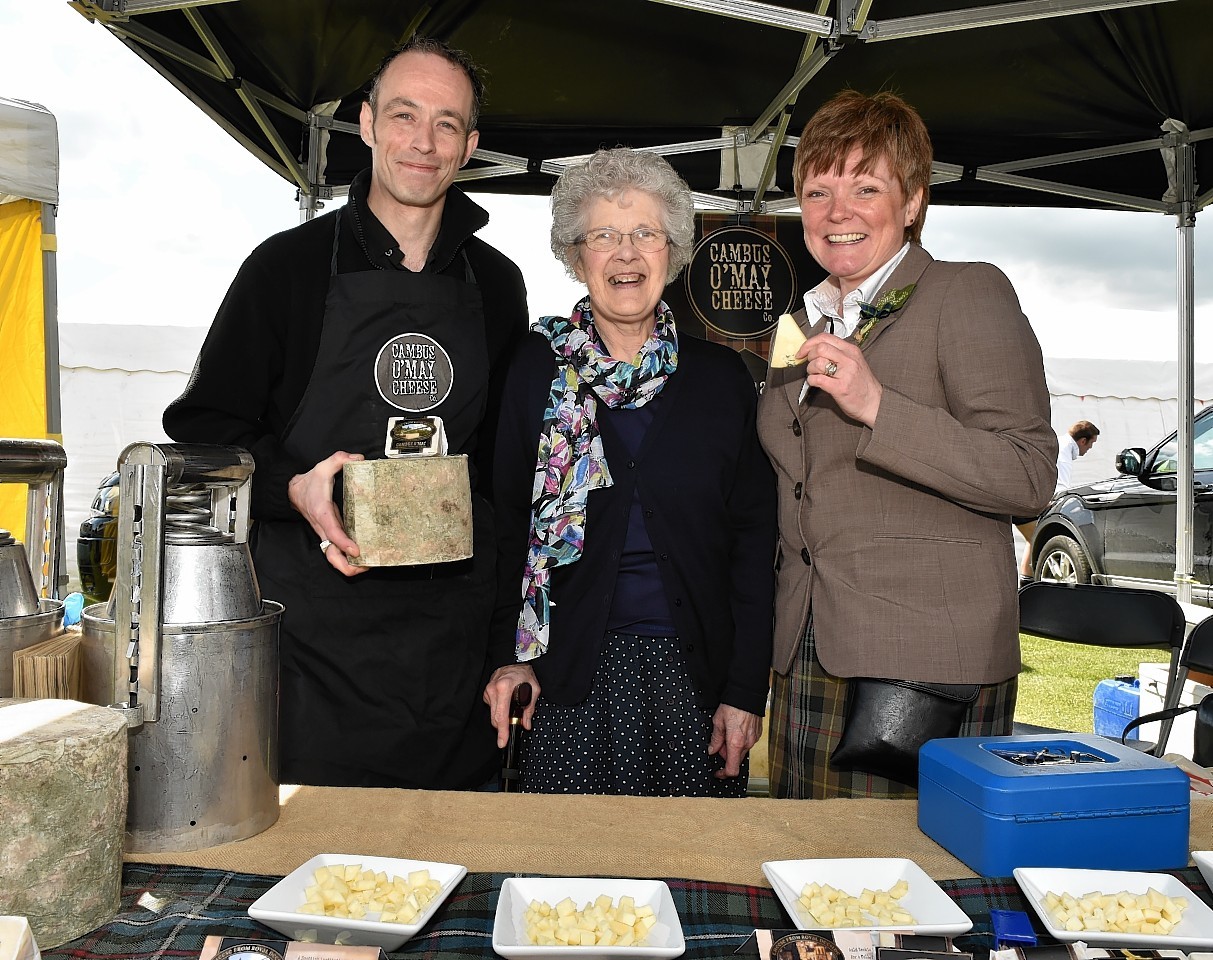An Aberdeenshire cheesemonger has made a bid to the European Union for its historic product to be given protected food status.
The family-run Cambus O’ May Cheese Company brand could soon be named in the same vein as Cullen Skink, Stornoway Black Pudding and Arbroath Smokies.
At Saturday’s Aboyne Highland Games three generations of the Deeside cheese-makers announced the bid for the cheese to be recognised with a protected food name (PFN).
Based near Ballater, the recipe and traditional process of creating the firm’s blend can be traced back to the 1800s when local farming families stirred up their own cheese in their cellars.
The company’s farmhouse cheese was honed through seven generations of managing director, James Reid’s, family in the Finzean area.
Mr Reid said the art of making the unique blend had been passed onto him by his mother Barbara Reid, 82.
He said: “This type of cheese was made in old farm houses in the north-east.
“It was traced back through my mother and her family here in Finzean specifically. She was the person we went to to recreate the recipe.
“My mum can still remember the cheese in the kitchen cellar when she was a girl.
“This has literally evolved over seven generations of the family. We do it exactly as it was back then when we were making cheese with left over milk from the day and butter.
“There is no one else making cheese like this in Europe. We traced this back to the 1800s but it has its origins much further than that.”
Farm minister Richard Lochhead backed the bid for PFN status, saying it “guarantees the food’s providence”.

